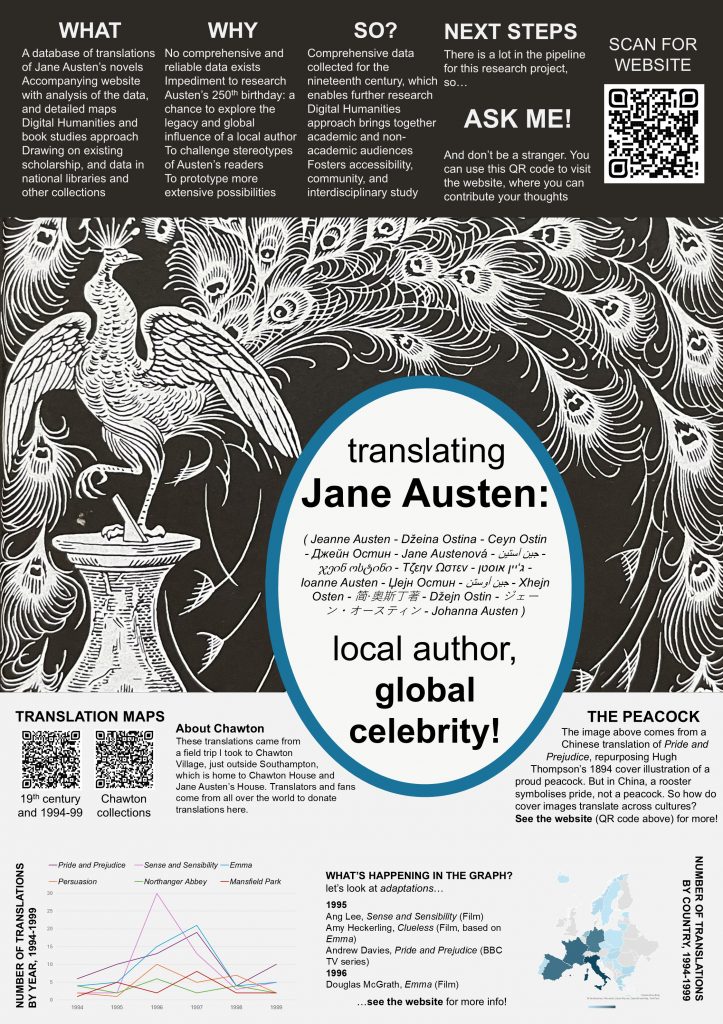My time on the project is now over, and so all that remains is for me to say I hope you enjoy using the website and the database. Next week, the database will be updated to contain all 388 entries I have recorded so far, with as much bibliographic information as I could gather. I hope this is useful and interesting, and shows some insightful trends, such as the rise in translations after 1995 (discussed on the ‘Investigating the Data’ page). There are now translations from 44 different countries and 37 languages, representative of the volume and diversity of Austen’s readers across the globe.
I have also added links to a few more digital humanities projects that might be of interest, including an amazing ‘digital galaxy’ of Estonian translators that provides a glimpse of what might be possible in the future for this project. I’ve also put links to all of the national library catalogues I used to record and reference the translations. These can be found on the ‘Bibliography’ page.
I will likely come back to check up on the project over the next few months, so in the meantime, if you have any contributions, please do use the ‘contributions’ button to tell me your thoughts. I have also designed an ‘add a translation’ button, which links to a form where you can fill in any information you have about a translation, whether it is in the database already or not yet recorded. You can find these on the homepage.
Finally, then, goodbye for now! I have had a brilliant time working on this, and I hope it is both useful and entertaining to see the variety of ways Austen has been read, understood, and loved across the world.
Happy 250th birthday to her.
Asha
